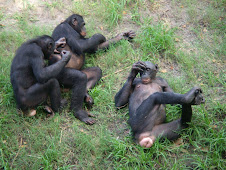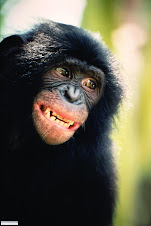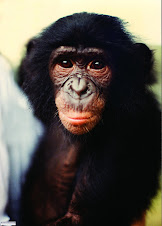
 A book that influenced my career choice was written many decades before I was born. It anthropomorphised wild animals by giving them human qualities of love, loyalty, and integrity. In spite of some exaggerations, the tragedy of what happened when wildlife ran aground of man's hubris had a profound effect on me -- to my young, impressionable mind, wild animals were noble creatures that suffered without voice.
A book that influenced my career choice was written many decades before I was born. It anthropomorphised wild animals by giving them human qualities of love, loyalty, and integrity. In spite of some exaggerations, the tragedy of what happened when wildlife ran aground of man's hubris had a profound effect on me -- to my young, impressionable mind, wild animals were noble creatures that suffered without voice.I happened to catch a PBS Nature show called The Wolf that Changed America on the author Ernest Thompson Seton. Seton was an anomaly -- a professional hunter who was also an observant author and artist. His epiphany began with a wild wolf named Lobo that he was hired to kill, in the Currumpaw region of northern New Mexico, in 1893.
The hunter Seton attributed near supernatural intellect to Lobo, who could not be shot, trapped, or poisoned. Determined to win, the clever Sexton managed to corner Lobo's female, a pure white animal called Blanca, who was killed by two lassos thrown around "the neck of the doomed wolf, and (we) strained our horses in opposite directions until the blood burst from her mouth, her eyes glazed, her limbs stiffened and then fell limp."
The story turns ever more graphic and tragic as Sexton writes how Lobo seemed to be crying for his mate, so even the cowboys commented that they had never heard the like. It was clear to the reader, as Sexton writes, that Lobo must die. The reader weeps with the writer, who is already regretting his actions, but says, "It cannot be otherwise."
Continuing the story in a straightforward manner, Seton wrote that he used Bianca's carcass to draw the male to an area set with leg-hold traps. Later, Sexton finds Lobo, with each foot caught in a trap, immobile and exhausted from two and a half days of fighting his fate.
Sexton decides to take Lobo alive and he describes how he manages to get a lasso around his neck, tie his jaws shut over a wooden stick, and haul him back to the ranch. Staked out, the wolf is indifferent to everything around him, and although food and water are within reach, he stares fixedly at the far horizon. Sexton was surprised that he did not call to his band. Lobo was dead in the morning.
The death of Lobo must have shaken Seton to his core. In the film, he writes a single word "Why?" as if to question the absurd cruelty of what he had done. For the rest of his life, he never killed another wolf.
Some speculate that the story was made up. Astonishing is the photograph of the downed wolf that Seton claims was Lobo, with traps seen on the three feet that are visible, (seen in the Nature film). I believe that the story was true. The capture of Lobo was realistic, and the description of the wolf's demeanor and death is typical for the blood loss, trauma, dehydration, and shock of days spent in the traps.
Wild Animals I Have Known was printed in 1898 and it was an instant success. It has been in print continuously to present. The Lobo story was the lead in a book that covered many other "named" animals such as Siverspot, a crow, Raggylug, a cottontail rabbit, the Springfield fox and Redruff, a partridge. There were also two dog stories (Bingo and Mully), and one on the Pacing Mustang.
Seton went on to found the Woodcraft movement which led to the Boy Scouts. He influenced Teddy Roosevelt and he lobbied for federal legislation for migratory birds and the setting aside of wilderness for National Parks.
As a child, when I read the story of Lobo, as well as the other animals that paraded across the pages of the musty old book, I had no inkling of the history behind it. All I remember was the searing story of the faithful wolf that died undefeated. As I have found out, the story of that single wolf influenced generations of environmentalists.
The story turns ever more graphic and tragic as Sexton writes how Lobo seemed to be crying for his mate, so even the cowboys commented that they had never heard the like. It was clear to the reader, as Sexton writes, that Lobo must die. The reader weeps with the writer, who is already regretting his actions, but says, "It cannot be otherwise."
Continuing the story in a straightforward manner, Seton wrote that he used Bianca's carcass to draw the male to an area set with leg-hold traps. Later, Sexton finds Lobo, with each foot caught in a trap, immobile and exhausted from two and a half days of fighting his fate.
Sexton decides to take Lobo alive and he describes how he manages to get a lasso around his neck, tie his jaws shut over a wooden stick, and haul him back to the ranch. Staked out, the wolf is indifferent to everything around him, and although food and water are within reach, he stares fixedly at the far horizon. Sexton was surprised that he did not call to his band. Lobo was dead in the morning.
The death of Lobo must have shaken Seton to his core. In the film, he writes a single word "Why?" as if to question the absurd cruelty of what he had done. For the rest of his life, he never killed another wolf.
Some speculate that the story was made up. Astonishing is the photograph of the downed wolf that Seton claims was Lobo, with traps seen on the three feet that are visible, (seen in the Nature film). I believe that the story was true. The capture of Lobo was realistic, and the description of the wolf's demeanor and death is typical for the blood loss, trauma, dehydration, and shock of days spent in the traps.
Wild Animals I Have Known was printed in 1898 and it was an instant success. It has been in print continuously to present. The Lobo story was the lead in a book that covered many other "named" animals such as Siverspot, a crow, Raggylug, a cottontail rabbit, the Springfield fox and Redruff, a partridge. There were also two dog stories (Bingo and Mully), and one on the Pacing Mustang.
Seton went on to found the Woodcraft movement which led to the Boy Scouts. He influenced Teddy Roosevelt and he lobbied for federal legislation for migratory birds and the setting aside of wilderness for National Parks.
As a child, when I read the story of Lobo, as well as the other animals that paraded across the pages of the musty old book, I had no inkling of the history behind it. All I remember was the searing story of the faithful wolf that died undefeated. As I have found out, the story of that single wolf influenced generations of environmentalists.













No comments:
Post a Comment